#metsavana
Text
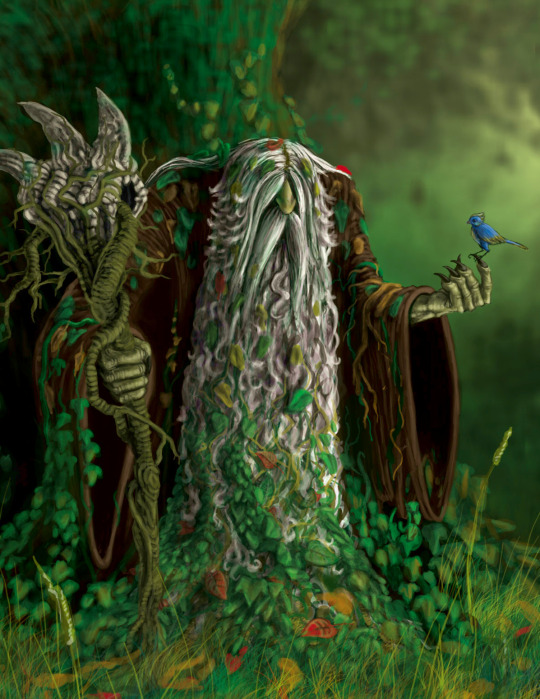
Legends and myths about trees
Forest myths, Estonian traditional beliefs (7)
The world of the Estonians’ ancestors – Metsavana, the old man of the forest
Metsavana, also known as metsataat or metsaisa, is a forest deity in Estonian mythology. Metsavana is a compound of metsa ("forest") and vana ("old, ancient"). The names metsataat and metsaisa translate to "forest father" or "forest old man".
Metsavana is one of the many types of forest spirits found in Estonian mythology, such as Metsaema ("forest mother"Ref) and Metsik ("forest fairy" Ref2). Finnic folklore has links with Slavic mythology, shown in Metsavana's similarities with the Leshy and corresponding other spirits.
Estonian forest spirits are often seen as tricksters, generally benevolent but posing some danger to humans who stray from the path or act against them. In Komi folk religion, he is referred to pseudonymously to avoid catching his notice, using names such as "uncle" (djadja) and "old man".
Each forest has its own metsavana. Metsavana is described as a tall elderly man with an unkempt beard, overgrown with moss. His clothes are made of birch and he wears a large birch hat and boots. Metsavana rules over the forest, deciding how plentiful the hunters' harvest will be, and he can speak with the birds and animals. They can be the protectors of wild animals, for example bears, wolves, snakes and foxes.

木にまつわる伝説・神話
森の神話・エストニアの民間伝承 (7)
エストニア人の祖先の世界 〜 森の老人メツァヴァナ
メツァヴァナとは、エストニア神話に登場する森の神である。メツァタートまたはメツァイサ とも呼ばれる。メツァヴァナは、メツァ は「森」とヴァナは 「古い、古代の」を意味する2語の合成語である。メツァタートとメツァイサは「森の父」または「森の老人」と訳される。
メツァヴァナはエストニア神話に登場する森の精霊の一種で、メツァエマ(「森の母」参照)やメツィク(「森の妖精」参照2)などがこれにあたる。バルト・フィン族の民間伝承はスラブ神話とのつながりがあり、メツァヴァナがレーシーやその他の森の精霊と類似していることからもわかる。
エストニアの森の精霊はトリックスター (悪戯者) として見られることが多く、一般的には善良であるが、道から外れたり逆らったりする人間には何らかの危険をもたらす。コミの民間宗教では、彼の目に留まらないように仮名で呼ばれ、「おじさん」や「老人」などの名称が使われる。
それぞれの森にはそれぞれのメツァヴァナがいる。メツァヴァナは背の高い老人で、髭は手入れされておらず、苔が生い茂っている。服は白樺でできており、大きな白樺の帽子とブーツを履いている。メツァヴァナは森を支配し、猟師たちの収穫の豊かさを決定し、鳥や動物と話すことができる。例えば、クマ、オオカミ、ヘビ、キツネなどの野生動物の保護者にもなれる。
#trees#tree myth#tree legend#forest#estonian mythology#metsavana#folklore#mythology#legend#nature#art
138 notes
·
View notes
Text
character stat framework
name: Saima Kristjan Vaher
nickname(s): S, a nicknames based on their wandering.
age: appears approximately 37, actual age - doesn't say.
birthdate: ????
species: mythic embodiment of folklore/restless spirit
gender: transfeminine agender being
preferred pronoun(s): they/she
romantic orientation: Biromanic
sexual orientation: Bisexual
parents: didn't have conventional parents. considers several folklore figures as 'parents' of sorts: Vanemuine, Metsaema and Metsavana, Veteema
siblings: considers varying spirits to be siblings of sorts although it's a somewhat loose association
significant other(s): single by default, relationships on a case by case basis
children: none
eye color(s): blue-green
hair color(s): light, light blond that fades out at the ends
body build: tall, a little bit lanky and slim
height: 6'0
TAGGED BY:@dxsole
TAGGING: if you see this you
4 notes
·
View notes
Photo

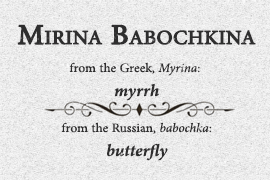
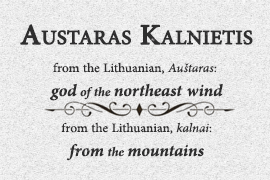






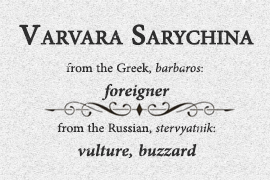
Wizarding Russian Empire and USSR || Name Meanings, Soviet Aurors I
Merkuriy Ilyich Znamenshchikov
(24 November 1887 – 1 July 1937)
Mirina Timofeyevna Babochkina
(4 April 1890 – 1 July 1937)
Austaras Perunovich Kalnietis
(6 January 1890 – 1 July 1937)
Kaloyan Ivanovich Reznikov
(8 October 1884 – 1 July 1937)
Zhyamina Azuolasovna Uzgiryte
(31 December 1887 – 1 July 1937)
Nastasya Vasilyevna Esaulova
(11 November 1891 – 1 July 1937)
Metsavana Kalevovich Alamets
(13 May 1881 – 1 July 1937)
Roksana Anatolyevna Cyhanenko
(21 June 1877 – 18 March 1938)
Mikhail Anatolyevich Reznichenko
(21 November 1882 – 31 August 1938)
Varvara Grigoriyevna Sarychina
(4 December 1883 – 24 December 1938)
8 notes
·
View notes
Text
I wouldn’t be me if I didn’t do something for @fuckyeahaphestonia‘s Estonia week, and I actually started writing something for day one that’s still being worked on BUT in the meantime, have some short, fairly plotless, could as well just be the lead-up to a longer story that doesn’t exist, Pottertalia for day three! Because I’ve been reading a lot of Harry Potter fic lately. Not for the first time, I took the liberty to build up more of the wizarding world beyond Hogwarts :>
Also, beyond the Harry Potter fic, this exists because of the Metsatöll album I received which has neat English translations in the booklet and so I now know that Küü is about ‘the serpent’! And Küü is one of my favorite Metsatöll songs!
hither
pairings/characters: Estonia (Eduard) & Seychelles (Angélique)
word count: 2012
summary:
It’s rare that Eduard meets someone who isn’t suspicious of him when they realize he can speak to snakes, so when Angélique Verlaque stumbles into his shop, he’s more than grateful.
British wizards are weird about snakes.
Eduard stopped counting how many times someone recoiled in fear from him after it happened five times in one day, back when he had only just settled in Diagon Alley. He almost gave up and went home so often in that first year, just after the turn of the century, but he knew he needed to be here if he wanted to be successful. Here, in the heart of the European Wizarding world still recovering from a war that he didn’t even hear about back in Estonia.
A war that apparently made his ability to talk to snakes something to recoil at.
Even now, some six years later, most people still flinch when Eduard speaks to the snakes in his shop, the ones he has carefully bred to be as helpful as possible, to be protectors or helpers or just willing to give up some scales or shed skin or venom for use in potions. Still, despite that, the business is running well. He knew it would. While shops like his are not a rarity in Wizarding Estonia, where ussikeelt, the snake language, is considered a gift rather than a curse, there isn’t a single other one like it in all of Great Britain.
How did they get their potion ingredients before he came around? Killing the snakes? Barbaric.
“Must you always make those weird sounds?” asks Piia, a magnificent python with unusual red markings all along her coiling body. She is draped lazily over a branch in her glass cage and watching Eduard from an upside-down position.
“It’s called singing,” Eduard replies, amused. He’s sure he’s explained this before. Multiple times. He likes to sing while he works, always has. The snakes seem to have no concept of what it means. Snakes don’t have much need for music, he supposes.
“It’s called disrupting my peace,” Piia hisses.
“Everything is disrupting your peace,” he mumbles to himself. “The world revolves around Piia.”
At least she isn’t one of those snakes he bred accidentally that can understand human language. His life would be even more difficult if she could hear all the grumbling he does about her and the other snakes. It’s all in good humor, but Piia doesn’t have much concept of that. Snakes apparently don’t have much need for humor either.
“Er, sorry?”
Eduard whips around to face the front of his shop at the female voice that breaks into his thoughts. He blinks dumbly, realizes he took his glasses off to inspect something and Summons them with a wave of his wand so he can actually look at the woman hovering around by the door. She appears to be younger than he is, early twenties maybe, and is dressed in a Muggle-style dress with colorful flowers on it.
“Hi, hello,” he says, smiling awkwardly. “Welcome to Majauss. Can I help you?”
The woman is looking around in wonder, at the various cages holding various sizes, colors and breeds of snakes and their preferred material to surround themselves with, and the diagnostic spells floating around them. She has dark eyes and curly dark hair pulled back into a messy ponytail with her wand stuck into it. It’s one of those fancy ones, with an ornate handle plated in—silver, maybe?
“I just wanted to look, I think,” she says eventually, the slightest of lisps audible. When she looks back at Eduard, she’s smiling enough that a single dimple appears among the freckles scattered across her warm brown skin. “I haven’t seen anything like this before.”
“Who is this human?” Piia hisses. “She smells delicious.”
“Don’t be creepy,” Eduard admonishes her. “You know you aren’t allowed to eat the costumers.”
Piia makes a sound that could be interpreted as a huff, and the woman tilts her head curiously as Eduard speaks to the python.
“I had no idea Parseltongue sounded like that,” she says.
“It sounds like Estonian to me,” Eduard shrugs. And, seeing her confusion, “That’s because I am Estonian, I imagine it would sound like English to an English-speaker.”
“I imagine it would,” she repeats. “What did the snake say?”
Eduard pulls his mouth into a grimace, and the woman laughs and waves one hand around, evidently deciding she doesn’t want to know. Smart witch. She walks further into the shop slowly, sandals scuffing on the flagstones. The sunlight shining through the windows behind her outlines her in gold. The rush hour is over in the Alley, and the sun is setting over Wizarding London.
“Can you speak to all snakes? Do they all speak the same language?” she asks, bending at the waist to peer at a cage containing a bunch of tiny corn snakes. One particularly brave one rises up and sways back and forth as if waving at her. She smiles, wriggling her fingers in return.
“I suppose they do.” He’s never thought much about it. He supposes there’s some variation in accents; some snakes sounds like they’re from Tallinn, others more as though they’d live on one of Estonia’s islands. Maybe it’s indicative of something.
Eduard hums and summons some parchment and a quill to write that thought down. It’s certainly something to look into. If only the Brits weren’t so scared of what they call Parseltongue, he could find an English-speaker and compare notes.
The woman is speaking to the corn snake in amused tones, as if talking to a child. It’s replying to her in a high-pitched, excited voice, even though Eduard is sure those are just regular corn snakes incapable of understanding her. He can practically feel Piia making that sound that he’s decided is the serpentine equivalent of an eye roll.
“Does this one have a name?” the woman asks.
“Hm?” Eduard walks over to stand next to her. The top of her head is level with his collar bones, and he blinks down at her earnest expression of curiosity. “No, this bunch don’t have names. Why? Are you offering to name her?”
“It’s a girl!” she says, seemingly delighted, and Eduard finds himself smiling along with her. “How can you tell?”
“Well, mostly—she sounds like a girl.” Of course, he has more official ways of sexing the snakes, but what’s the need when he can just hear, when he can ask?
“That’s fair. I’m not sure what I’d call her, but I can offer you my own name, if you want it.” She glances up at him with one dark eye, some sort of challenge glittering in it, although Eduard can’t imagine what’s challenging about telling someone your name, unless it’s something weird like the British wizards tend to name their children. If he never meets someone named Cygnus or Albus or Merula again, it will be too soon.
“I’d be honored,” he says instead, and she laughs lightly before holding out her left hand, which he clasps.
“Angélique Verlaque. It’s a pleasure.”
Thank Metsavana, she has a normal name, if not a British one. That might explain why she has no issue with ussikeelt. It doesn’t necessarily explain why it sounds vaguely familiar.
“Eduard Mets. Likewise.”
She bites her lip and gives his hand a firm shake before letting go.
“I’d love to have a pet snake, really,” she says with a hint of regret in her voice, turning back to the enthusiastic little corn snake. It follows her fingers when she swirls it around in front of the glass as though she’s a snake charmer.
“I’m hungry!” the snake is yelling in reply. “Can I eat that? Is that food? Food? I’m hungry! Food?”
“She’s hungry,” Eduard says, amused. No doubt, Piia would have something to say about such undignified behavior. “Why can’t you have a pet snake? Magical snakes especially are very independent; they’re not hard to take care of at all.”
Angélique smiles up at him again, all gleaming eyes and wayward curls springing around her face. Now that he thinks about it, she looks familiar as well.
“Do I know you?” he blurts, then frowns at himself. “I’m sorry, that wasn’t very professional.”
“There’s a chance you do. The reason I can’t have a pet snake is because I’m almost always away, which is because I’m—I play Quidditch. Professionally.”
Instinctively, Eduard glances over at the part of the shop where the snakes who could understand human language used to be, because for some reason, one of them had decided he loved Quidditch and would practically throw himself against the glass anytime someone mentioned the sport. And that was often. It’s a very popular subject of conversation even in a shop filled with snakes. As a matter of fact, there have been multiple children wanting to buy a snake as a mascot to support their school team. Eduard has to admit he’s pretty charmed by the idea of having a snake as a school mascot, but did refuse to sell them one, of course.
“Professionally,” he just repeats, because the Quidditch-loving snake is long gone, bought by a little old man who needed a friend, and who wanted to scare his grandchildren. Wizards are weird, and Eduard is saying that as a wizard himself. He can talk to snakes.
“Professionally,” Angélique says again, visibly straining not to laugh.
It suddenly dawns on him. “Oh! I saw you in the newspaper! The national team drafted you, didn’t they?”
She nods, spreading her arms and bowing her head as if bowing.
“And I’m not even English! My Beauxbâtons classmates will kill me if we beat France.”
Oh, that explains the fancy wand. The French have a way with wands that the British don’t appreciate. But then, neither do the Estonians, of course—all Estonian wizards, if not those of Russian descent, have their wands made from wood from one the sacred groves, and the Estonian school of magic doesn’t hold with things like putting unicorn hair into the wood. Eduard was baffled by the fancy sticks he saw British wizards carrying around when he first arrived in England.
“Maybe you do need a snake,” he muses, amused. “To protect you from the French.”
“I’m not even French either,” she laments. “But then again, I’m from the Seychelles, which has about fifteen magical people, and fourteen of them are related. None of them to me.”
Eduard laughs.
“Still, I’m afraid I have no time for a snake. Or any kind of pet.” A regretful sigh that ruffled a wayward curl.
“Well,” he says, pushing his glasses up, “you’re always welcome here, of course. Piia would be happy to—ah…” He glances over at Piia, who seems to have fallen asleep. “Piia would like to eat you, actually, but you should take that as a compliment.”
Oh, Hiid, why must he always say such stupid things?
Angélique actually laughs, though, clear like a waterfall, and Eduard decides he likes her very much. He may need to start paying more attention to Quidditch.
“Well, tell Piia I’m honored.”
“Absolutely not, it’ll only get to her head.”
She laughs again, and reaches up to trail her fingers across his upper arm, over the thin fabric of his shirt. She feels warm, and Eduard can feel himself blushing. Which is ridiculous, because he’s nearly thirty and he shouldn’t still be flustered whenever someone good-looking spares him more than a passing glance. Still, he quickly blinks and glances away when Angélique meets his gaze.
“I’ll see you around then, Eduard. Is it okay if I call you Eduard?” For the first time, a hint of an accent comes through, in the way she pronounces his name, and it’s oddly charming.
“Of course. I’d love to see you around, Angélique.”
With another bright smile and a wave, either at him or at the hungry corn snake in the tank, she’s gone, the flash of silver on her wand handle the last thing Eduard sees of her through the windows.
Promptly, Piia wakes. She probably wasn’t even asleep, the drama queen.
“I told you, she smells delicious.”
He actually has no idea. Maybe he’ll find out one day.
“Creep.”
#me looking up the estonian translation of parseltongue for two hours: this is fine#apheeweek#aph estonia#aph seychelles#Hetalia#u: harry potter#fin#want to write more pottertalia#I love researching translations for hours#that's completely genuine#I'll be a great translator one day#also I believe est is a slytherin#sey... I'd say hufflepuff#especially if you consider people get sorted when they're Eleven#w: 2500#np
14 notes
·
View notes
Text
[Just casually thinks about Saima meeting up with Vanemuine to give him updates about how things are going and what has been going well, and where there is still opportunity for more. Especially in terms of getting out there and letting folks know there are these stories that should be heard and cared about.
A lot of this comes down to them making space for more of these well-preserved folksongs to be recognized and explored.
Also thinks about them with the Metsaema and Metsavana to finish up some things in preparation for the coming winter. Likely them making some last minute trips down to the waters to see the movement of the water before it starts to freeze over.
Not that they won’t be out there in the winter when it does freeze over - but there’s a slightly different approach they would have spending time there. ]
1 note
·
View note
Photo



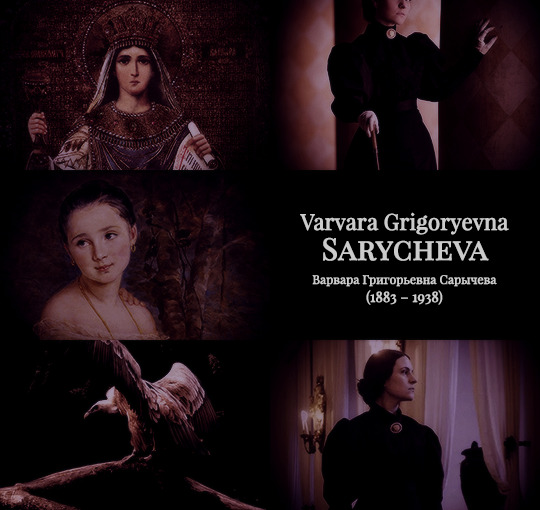






Wizarding Russian Empire and USSR || Soviet Aurors, part I
Roksana Anatolyevna Cyhanenko
(21 June 1877 – 18 March 1938) Cyhanenko was an Auror’s daughter from Transcarpathia. Her father was of distant Romani descent, but their family had long since become “settled.” She attended Koldovstortez from 1887 until 1895 and after completing her studies, she joined the Obshchina Ved’m i Volshebnikov. She initially joined the Shabash Volshebnikov in 1897, but broke with them in 1914. Cyhanenko was arrested in Ledenets in 1905 and sentenced to death, but escaped across the Black Sea to Romania. When World War I broke out, she took a firmly an anti-war and anti-intervention stance and worked on columns about the subject with Mariamna Timofeyevna Gretskaya and the Lutsenkos. She returned to Russia in 1917 and helped lead the stormings of the Dubovaya Roshcha in Lysaya Gora and Pryanichnyy Dvorets in Ledenets.
During the Civil War, she was assigned to the Ukraine and focused mostly on crushing the OSK. At the end of the Civil War, she was among those sent to the Urals with M.I. Znamenshchikov to crush the rebellion of goblins and Kladenets, which they did with extreme brutality. After the end of the war, she became a staunch Leftist and a political supporter of Oksana and Vladimir Lutsenko. However, like most other Leftists, she recanted her views and was readmitted to the BK in 1928.
In 1936, she was a witness to the show trial of Zaria Krasavkina, Yefrem Levandovsky, Germes Golubtsov, and others and fully believed the charges at the time, calling for their executions. However, in December 1936, she confided to Zdravko Vlaykovich that, in retrospect, something about the trial seemed off— Krasavkina came off as far too mentally unstable to have been operating a food stand, let alone an international terrorist group; Golubtsov kept making bitter and sarcastic comments; no one could agree who was supposed to have done what; V.D. Solovieva had claimed she went to Ledenets in January 1933 when she had actually been in exile in the Urals; and the youngest defendant, Alisa Genrikhovna Zakite, had trouble distinguishing between Viktor and Vitaly Lutsenko, the eldest and third sons of Oksana and Vladimir, even though she claimed to have met with them together and separately in France and the Netherlands.
Cyhanenko did not get a chance to confide her suspicions to anyone else. She arrested 15 November 1937 and executed 18 March 1938. Her second husband, Orfey Tarasovich Litvinenko, was also executed (her first husband, whom she’d divorced in 1924, had died in 1929), while her four children and two stepdaughters were packed off to Vyraj. One of her daughters and one of her stepdaughters both died there, but the others were freed in the mid-1950s.
Cyhanenko was one of the first convicted victims of the Great Harvest to be cleared posthumously and two of her surviving children, Astreya and Zefir, both became historians and dissidents after their release from Vyraj and used the compound surname, Cyhanenko-Uhrinenko, to honor both of their parents.
Metsavana Kalevovich Alamets
(13 May 1881 – 1 July 1937) A Halfblood from Estonia, Alamets completed his studies at Koldovstortez in 1898 and became an Auror in 1903. In 1916, sick of the incompetence of the Volshebny Duma, he resigned his post and attempted to return home, but found himself unable to do so because of the German army’s occupation of the area.
In 1918, he was one of the numerous former aurors who had served under the VD who joined the BK. In 1919, he was one of those who foiled Veles Svetovidovich Medvedev’s attack on the city of Ledenets and was then later sent south to deal with Yelisaveta Patrikeyevna Korsakova, the last of the VSDP Aurors left standing. In 1931, he largely gave up active duty as an Auror in favor of becoming the Defense Against the Dark Arts professor at Koldovstortez.
From about 1919 until 1926, Alamets had been in a romantic relationship with fellow Auror, Aleksey Yevdokimovich Kopeinikov, which proved to be his undoing after Kopeinikov became a defendant in the first show trial in September 1936. Though Kopeinikov had not implicated him, the Zhnetsy were apparently suspicious nonetheless and tortured Uzgiryte and Esaulova and then Znamenshchikov into implicating him instead. He only lasted a week under torture before admitting to everything and signing a confession.
After his execution, his sister, Metsaema Alamets, and her husband were both arrested and executed in 1939. Their daughter, Veteema Alliksaar, was sent to Vyraj, but freed in the 1950s.
Mikhail Anatolyevich Reznichenko
(21 November 1882 – 31 August 1938) Reznichenko was a Halfblood from the Ukraine, one of the ten children of a Zemlyanin butcher and a witch. He was taught magic at home by his mother and had no formal education. His mother died when he was 13 and he ran away from home at 15 to escape from his violent alcoholic father and ended up in Kiev where he found menial work. In the summer of 1915, due to World War I, he moved to Ledenets and joined the BK shortly after, due to his disgust at the VD's decision to blithely ignore the widespread devastation in the Russian Empire. In December 1916, he, Roksana Cyhanenko, and her then-husband, Astrey Anatolyevich Uhrinenko, organized a demonstration in Ledenets to call for the overthrow of the VD. They were imprisoned for their efforts, but were freed that February and went to Lysaya Gora, where they helped in the storming of the Dubovaya Roshcha.
At some point before or after this point he married Zhiva Dogodinichna Kazakova, a fellow revolutionary of Old Pureblood stock who was seventeen years his senior. In the fall of 1919, he was sent to help prepare defenses of Ledenets from the forces of Veles Medvedev, but instead took the food and supplies and men he was given and stayed in the south of the Ukraine. That October, he still hadn’t showed, which the SK in Lysaya Gora realized when they received a panicked owl from Zaria Krasavkina, the Vedma of the city. Babushkin was enraged at Reznichenko’s behavior and ordered that a warrant be put out for his arrest. Instead, Reznichenko fled for the Crimea and spent most of his time organizing a reign of terror against the Mavka, Rusalki, and other non-humans, who had claimed had been collaborating with the VSDP. This came to an abrupt end when the area was retaken by M.I. Volkov. Reznichenko left most of his followers behind to be massacred while he fled back into the Ukraine.
He was found and arrested in December 1919 and taken back to Lysaya Gora, but let off with a slap on a wrist after he claimed the weather had not permitted him to set sail for Buyan. In February 1920, he was allowed back into the field and helped rout Volkov in southern Russia and the North Caucasus, but then blundered again. In March, his forces managed to capture Lazar Stefanovich Kargin, an Auror who supported the VSDP and husband of Yelizaveta Korsakova, who was given command of what was left of the VSDP’s forces after Volkov was forced to resign. There were hopes that Kargin could be used as a bargaining chip, but that was smashed when Reznichenko became extremely intoxicated on the evening of 30 April 1920 and passed out. While was unconscious, a group of his followers murdered Kargin. The group responsible claimed afterwards that he had tried to escape and they had no choice, though the VSDP insisted that he was murdered while tied to a post. This event led to Reznichenko being recalled to Lysaya Gora again and was censured. In the end, the event ended up being temporarily forgotten, because the VSDP was already a spent force and Korsakova fled Russia for the Balkans at the end of 1920.
After the Civil War ended, he remained part of the Auror office, but became known as a brutal bungler. He and Kazakova divorced in 1922 or 1923 after she found out that he had been cheating on her with a seventeen-year-old named Pelagiya Pavlovna Zolotova. He tried to poison himself, but failed, and remarried to Zolotova in 1925. This marriage was even shorter than his first: she also left him in 1929 and took their son with her. Afterwards, he was sent to Azerbaijan to crush rebellions and gained the ire of the region’s deputy Vedma, Asena Zaurovna Aslanova, because his love of massacres and looting was provoking rebellions.
By the early 1930s, Reznichenko had made countless enemies among his fellow Aurors, including Znamenshchikov, Kalnietis, Babochkina, and his own assistant, Marina Yuriyevna Kasatkina. Kasatkina in particular loathed him, regarding him as incompetent, drunken thug.
This turned deadly by the late 1930s and he helped the arrange the arrests of both Kasatkina and Znamenshchikov. He then was assigned to Ledenets in place of Babochkina and helped the Zhnets, Viktor Arkhipovich Baltais, carry out repressions there. However, he was himself arrested 24 March 1938, charged with spying for Gellert Grindelwald, and extensively tortured until he confessed. He was executed 31 August 1938.
Varvara Grigoriyevna Sarycheva
(4 December 1883 – 24 December 1938) Sarycheva was born in 1883, the third of four children. Her family were poor and halfblood. She had an older sister, Yefrosinia Sarycheva, who joined the KDMM in 1895, and a younger sister, Lyusya, who became a healer. She and Lyusya first joined the Bratsvo in 1914 and took part in the Civil War. Yefrosinia later participated in the KDMM’s attempted rebellion against the BK, which fell flat, and attempted to flee Russia, but was caught and executed. Her behavior, however, did not (at the least at the time) diminish the standing of her younger sisters in any way. In 1920, she gained almost immediate fame for heading off an attack by the VSDP while eight months pregnant with her youngest daughter.
After the end of the Civil War, she was sent to China and later was posted in the East in 1927. The remoteness of the region meant that she played no role in the power struggles during the late 1920s and was allowed to relatively aloof from the feuds in the Auror office. In 1934, she, Znamenshchikov, S.V. Ryndin, and M.S. Zherebtsov were all named as senior Aurors. She was often considered the most mild-mannered and least bloodthirsty of the four.
During the Great Harvest, Sarycheva was briefly spared from arrest for wholly practical reasons, but found herself in trouble due to the defection of the Zhnets, Grigori Lukyanovich Alatyrtsev to Mongolia, and the fact that her younger sister, Lyusya, had been the mistress of the executed Znamenshchikov from 1918 until 1925. In the summer of 1938, she was visited in the Far East by the deputy head of the Zhnetsy, Melanippa Ippolitovna Chernyshova and Yuri Sylenovich Kozachenko, Kostov’s former private secretary, who immediately set about making her life a living hell. Chernyshova embarked on a gaslighting campaign against her while Kozachenko spent his time harassing virtually everyone to a virtual inquisition.
Sarycheva was arrested 4 November 1938, three days after her sister and second husband, Afinodor Zinovyevich Sychev. All three were extensively tortured to make them confess to espionage and treason and Lyusya confessed to all charges after Nane Aslanyan ordered Nataliya Valeryevna Voronova to gouge out both of her eyes.
What initially happened to Sarycheva was unknown, though it was discovered in the 1990s that she was died as a result of unceasing torture on the night of 24 December 1938. She had repeatedly refused to sign a confession, saying that she “deserved this”. Afterwards, her husband, sister, and son were executed, while her daughters and four stepchildren and Lyusya’s two sons were sent to Vyraj.
Of those, only her youngest daughter, Pelagiya, and three of the stepchildren made it out alive, as had the young son that her eldest daughter, Yevfemiya, had given birth to shortly before dying of Black Cat Flu. In 1955, at his private trial, the former Zhnets, Svarog Borisovich Myasnikov, confessed that he’d had Lyusya’s younger son, Grigori Andreyevich Zhuravlev, executed in 1949 on Kostov's orders due the suspicions that he’d actually been fathered by Znamenshchikov, but the rest had simply died of illness or exhaustion. ( Myasnikov also confessed to having ordered the murder that same year of Znamenshchikov’s only legitimate son, Ilya.)
Kaloyan Ivanovich Reznikov
(8 October 1884 – 1 July 1937) Reznikov was born in southern Ukraine as the son of a zemlyanin Jewish laborer and a witch of Bulgarian descent. His mother taught him magic at home and afterwards moved to Minsk in search of work. A long time sympathizer of revolutionary movements, he joined the BK in 1917, where he was put through a quick study program in the methods of dueling and martial magic.
In 1921, he took part in the suppression of the revolt of Goblins and Kladenets in the Urals. In mid-1920s, he was stationed in Germany before recalled and given command in Ledenets in 1928. He was arrested 31 May 1937 and rather undergo torture, immediately incriminated all the people the Zhnets assigned to interrogate him had in mind. He was executed 1 July 1937, though he’d hoped to be spared execution.
Merkuriy Ilyich Znamenshchikov
(24 November 1887 – 1 July 1937) Born into an Old, but impoverished, Pureblood family, Znamenshchikov nevertheless joined the BK in 1917, though he was far from the only member with such a background. He was considered a hero of the Civil War, notwithstanding his ruthlessness and brutality. Most infamously, in 1921 and 1922, he was given the job of crushing first the rebel Aurors who had taken over Koldovstortez and then the rebellion of Goblins and Kladenets in the Urals.
He first came into conflict with Afanasiy Kostov in the 1920s, when he supported Svetovid Vladimirovich Levchenko’s attempts to reform the Auror Office and then protested the promotion of S.V. Ryndin to the Commissar after Levchenko and his wife and son were massacred by Mavka in the Ukraine. Not surprisingly, Ryndin and Znamenshchikov took to each other like oil and water and the Aurors quickly became divided between the two camps.
In 1928, Marena Kulchytskaya and Devana Zalischenko sent Kostov information that claimed he was involved in a conspiracy against the regime. Neither women appear to have trusted him fully, probably because of his origins, though ironically, the two of them were also from Old Pureblood families. However, at the time, Kostov was more interested in trying to force Anfisa Krupina and Nestor Voinov from power, so it came to nothing.
However, in 1937, he was implicated in a supposed vast conspiracy in the Aurors’ Office by Uzgiryte and Esaulova after both of them had been tortured over the course of around seven months. He was arrested 6 June 1937 and tortured by S.I. Sobiesky, Melanippa Chernyshova, Gekata Saranchina, and Yevrinom Mushenko until he broke down and confessed that in the late 1920s, Shushanik Khosrovna Tehlirian, the former headmistress of Koldovstortez, had recruited him into a conspiracy with Krupina and Voinov, that had joined with the Leftist terrorist groups organized by Krasavkina and Levandovsky in 1931. After her own arrest in 1939, Chernyshova confessed that they had broken him by threatening to have his two teenage daughters gang raped in front of him. Znamenshchikov also implicated Varvara Sarychina, and claimed that they’d been communicating together through her younger sister, Lyusya, who had been his mistress from 1918 until 1926.
After his execution, his second wife, Marfa Feodorovna Kuritsyna, was arrested as was his mistress, Ipatiya Nestorovna Levandovskaya, the former Arithmancy professor at Koldovstoretz and supposed key player in the plot; his three sisters; and three daughters by his late first wife. His two brothers were both executed.
Zhyamina Azuolasovna Uzgiryte
(31 December 1887 – 1 July 1937) Born into a poor, but Pureblood Lithuanian family, Uzgiryte had no formal education and spent her earliest years as a self-taught herbologist and healer. In 1915, she fled Lithuania for Belarus after the former was invaded by the German army, enraged that the Volshebnyi Duma were still insisting on no intervention. In February 1917, she joined the BK and in 1918, she was appointed as an Auror and fought in the Civil War. In the 1920s, Uzgiryte briefly took the side of the Lutsenkos, but had left by 1927, concluding that their cause was hopeless and instead enrolled in Koldovstortez’s adult education programs. In the late 1920s and early 1930s, she served abroad, mainly in Japan and the United Kingdom.
However, in the summer of 1936, she was implicated in the supposed vast Lutsenkoist-Krasvakinan conspiracy, first by the former Lutsenkoists, Azovka Bulatovna Timurova and Sofoniya Isaakovna Arkhipienka, who had both been arrested in May 1936 and tortured until they confessed to being active terrorists acting at the specific instructions of Oksana Lutsenko and her sons.
Uzgiryte was arrested 19 September 1936, six days after Nastasya Vasilyevna Esaulova. The two of them were then repeatedly questioned and tortured over the course of seven months, only breaking down in May 1937. During the course of this, Uzgiryte was implicated again by L.U. Nemeczek.
In May 1937, Uzgiryte confessed to plotting terrorism and treason with Timurova; Arkhipienka; and the former Auror, Aleksey Yevdokimovich Kopeinikov (all defendants at the first show trial) and also named Znamenshchikov and Babochkina as co-conspirators. Uzgiryte was put on trial alongside the other Aurors from 27 June until 1 July 1937 and executed that evening.
Austaras Perunovich Kalnietis
(6 January 1890 – 1 July 1937) Kalnietis was born in Lithuania into a middle class family. The Black Crone Zhnets, Ausrine Avreliyevna Kalnietyte, was his first cousin. He attended Koldovstortez from 1900 until 1908, earning top marks in nearly all of his courses. In 1914, he successfully became an Auror and married a Latvian witch named Larisa Pelasgovna Ziedina in 1916. However, he chose to join the BK in the spring of 1917 due to the failures of the fledgling Russian Ministry.
In 1919, he and Nastasya Vasilyevna Esaulova gained recognition by helping defend Lysaya Gora from an assault by Mstislav Volkov. The following year, he was sent to the North Caucasus to destroy Volkov and his forces and later participated in the destruction of Volkov’s replacement, Yelisaveta Korsakova before helping crush the Goblin and Kladenets Rebellion in the Urals.
After the end of the Civil War, he was assigned to the North Caucasus region. In the early and mid-1920s, he became an outspoken supporter of Levchenko and befriended both Znamenshchikov and Babochkina. The three of them were noted to have been exceptionally unfond of the nominal commander, Sevastyan Ryndin, who was appointed after Levchenko was massacred by Mavka in 1925. After months of torture, the Aurors, Uzgiryte and Esaulova, incriminated all three of them and countless others.
Kalnietis was arrested 11 June 1937, five years after Znamenshchikov. They were executed together on 1 July 1937. Afterwards, his wife was arrested and executed in 1940 while their eighteen-year-old twin daughters, Ausrine and Vakarine Kalnietyte, were both sent to Vyraj. The twins were both released in 1947, but sent to live in Kazakhstan where they stayed until 1955 when their father’s conviction was overturned.
Mirina Timofeyevna Babochkina
(4 April 1890 – 1 July 1937) Babochkina was the second of the four daughters of a Russian Jewish rozhdennyy zemley from Bessarabia and a Catholic Romanian Pureblood. She studied at Koldovstoretz from 1906 until 1914, focusing mostly on Potions and became a potions researcher after the completion of her studies. In 1914 or 1915, she married a Ukrainian squib named Danilo Lazarevich Levenko, who was as mild-mannered and gentle as she was fiery and outspoken.
In 1917, she joined the Brátstvo and took an active part in the Civil War. Despite her lack of formal training, she showed great skill in marital magic, eventually being dubbed an Auror in 1919 after helping defend Ledenets from an attack by the VSDP Auror, S.V. Medvedev. She quickly gained a reputation for brutality, especially against recalcitrant non-humans. She was one of the two Mirinas of the Civil War and called “Red Mirina” because of her red hair while the other was “Black Mirina”, the dark-haired Zhnets, Mirina Feodorovna Voinova.
After the war, she became a close associate of Levchenko and Znamenshchikov and they tried to reform the trainings and tactics of Aurors, especially in reference to the growing threat that Grindelwald posed to Europe. At some point in the 1920s, she became a close friend of Miroslava Vseslav’yevna Volkova, who constantly vouched for Babochkina’s trustworthiness, but this did not protect her, nor did the fact that her younger sister, Marpesia, was the widow of S.V. Lekarev.
Babochkina was arrested 13 June 1937 and tortured into confessing to all matter of crimes. In the course of the interrogations, Medvednikov somehow came up the idea that she and her sisters were former prostitutes. After her execution, her mother, husband, two surviving sisters, two brothers-in-law, and nephews were all executed while her daughters and one of her nieces were packed off to Vyraj (the younger niece, Otrera was permitted to be adopted her half-brother, both because of her youth and the fact that she was the late Lekarev’s daughter).
In her memoir, Taliya Anatolyevna Krupina recalled meeting Ippolita, the younger of Babochkina’s two daughters, shortly after her arrival in Vyraj and that she attempted to comfort the girl, who was barely 18, ill, and thoroughly terrified. Ippolita did manage to survive, however, and became a dissident after her release, much to her older sister’s displeasure. A noted critic of Svyatoslav Savvich Tarakanov, she was arrested repeatedly in the 1960s and 70s and died in exile in Siberia in 1980 at the age of 61.
Nastasya Vasilyevna Esaulova
(11 November 1891 – 1 July 1937) Esaulova, a halfblood ethnic Russian, was the youngest of three girls who was raised by their father’s parents after their mother died young. She was introduced to left-wing politics by her older sister, Apraksa, who married a revolutionary, Volos Leshyevich Dubovich, in 1906. In 1907, shortly after the completion of her studies at Koldovstortez, Esaulova also joined the BK, and helped distribute literature that Apraksa wrote.
However, she was caught in 1914 and sentenced to a lifetime of exile in Siberia. While there, she married the poet, Germanik Konstaninovich Boligolov, in 1916. Her best friend from this period onwards was the writer, Noyema Moiseyevna Rosenthal, best known as the muse of the poet, Stefan Yemelyanovich Pugachev. After the downfall of the VD, Esaulova went back to western Russia and was reunited with her older sister. At the same time, the two managed to convince their brother-in-law, Mikhail Zherebtsov, to join the BK’s cause. Their oldest sister, Marya, however, was uninterested in politics and said she had enough to do caring for her three children. Like her brother-in-law, Esaulova became an Auror during the Civil War, mainly due to her demonstrated talent at marital magic and dueling.
In 1918, she and Boligolov divorced and the following year, she married again to a fellow Auror, Mstislav Ivanovich Dunyaev, by whom she would have two daughters and a son. However, during the 1920s, rifts grew between the family. First, Apraksa and Nastasya came to hate Zherebtsov on account of his infidelity to their sister and they blamed him for her untimely death in 1925. Further problems developed, because of politics: Nastasya and Apraksa’s two husbands, Dubovich and Zolotarev, were all staunchly opposed to the powers of Afanasiy Kostov and supported the Lutsenkos, Krasavkina, and Ye. I. Levandovsky, while Apraksa and Dunyaev angrily insisted that they were going to tear the party apart.
By the end of the 1920s, this rift was largely mended, but came back to haunt them in 1936. During the interrogation of Krasavkina, Levandovsky, and others, Dubovich, Zolotarev, and Esaulova were all accused of being apart of the supposed conspiracy. Zolotarev was arrested 26 August and Esaulova 13 September. While Zolotarev quickly agreed to confess to whatever his interrogators whatever to save his wife and daughters, Esaulova refused to break until June 1937. The supposed catalyst for her relenting was her husband visiting her in prison and angrily denouncing her as a traitor. The day after this she signed a confession and implicated all of the people the Zhnetsy had in mind.
She was executed on 1 July 1937 with the other Aurors. Dunyaev killed himself five days after his wife’s execution, in apparent remorse. Their three children were all sent to Vyraj and not freed until the 1950s. Their son died shortly after his release, but the two daughters, Zlata and Zoria, lobbied for their mother's rehabilitation, which was granted in 1957.
8 notes
·
View notes
Text
A selection of mythical figures that Saima has known and their relations. The list is probably longer but I just wanted to add some folks that may come up.
Jumal - sky god, helps makes the ground fertile through thunderstorms. Advised and was someone who others looked up to as something of a figurehead. Had likely heard more about Jumal than from him personally. Might have had a sighting when thunderstorms were being creating during the summer. Heard he ended up having his role given over to Uku at some point.
Vanemuine - God of art, songs and literature. Mostly father figure and major influence over Saima. Playful, creative, helpful- wise. Not above playing a trick, has been known to tell strange riddles. They visit with him pretty regularly and they have been known to wander the landscape, S keeps him updated on the ways stories are told. He was amused by the quiz to tell you which Estonian mythological creature you are that was shared.
Tooni - God of the Dead, Saima and Tooni have had entirely too many run-ins considering their history, there may be a running gag about the places that S and Tooni meet each other at. Nevertheless, they do seem to be on rather friendly terms, partially since they have done some favors that Tooni hadn’t been able to leave his place for.
Metsaema - Mother of Forest
Metsavana - Old Man of the Forest
Metsaema and Metsavana are a pair closely associated with the forest and S probably spent a lot of their past helping to look after the forest in the spare time. Or at least keep an eye out for people who weren’t doing right by those residing in the forests. Metsaema and Metsavana can be very warm if somewhat eccentric but as with most of the deities associated with nature - don’t take well to their lands being disrespected.
Veteema – Mother of Waters. One of the first figures that they run into when coming into a more physical form on a beach somewhere. May have been in her care for some time before going to learn more about the land, what and who was settling on the land and what is going to be told of them. Kind but protective of their waters, does not hesitate to wreck the experiences of those disrespectful to the waters.
Kratt - S is used to dealing with these such demons who steal resources for their maker. May have occasionally made use of such creatures for the sake of their friends. have negotiated with them a number of times about potential trades.
Haldjas- protector spirits (or fairies/elves) of variety places, animals, plants or people. Did spent a lot of time running around with Haldjas and up to some mischief here and there. May have familial ties to them especially since of these spirits would be near Metsaema or Veteema.
1 note
·
View note